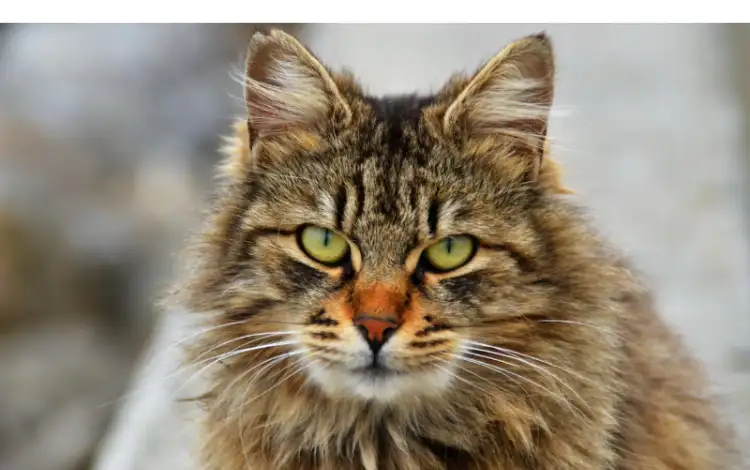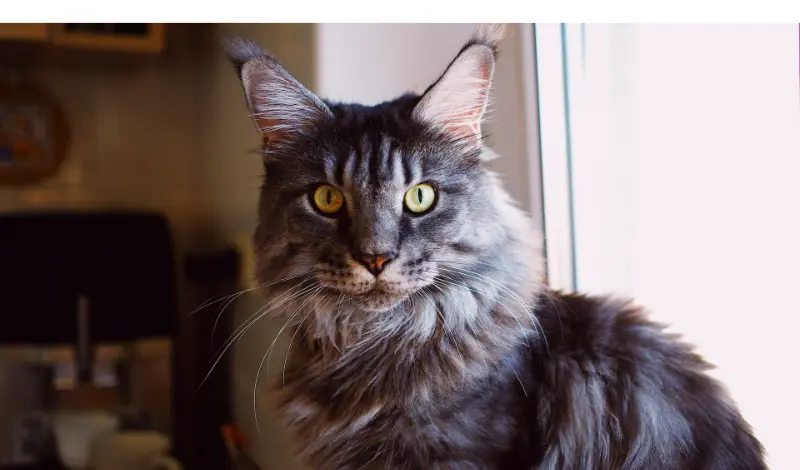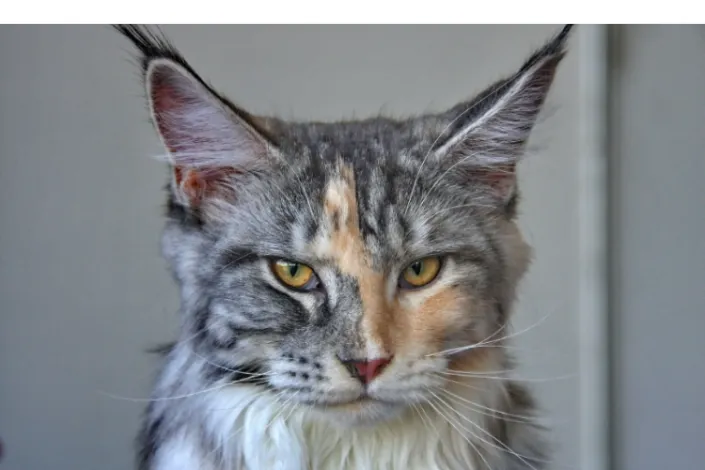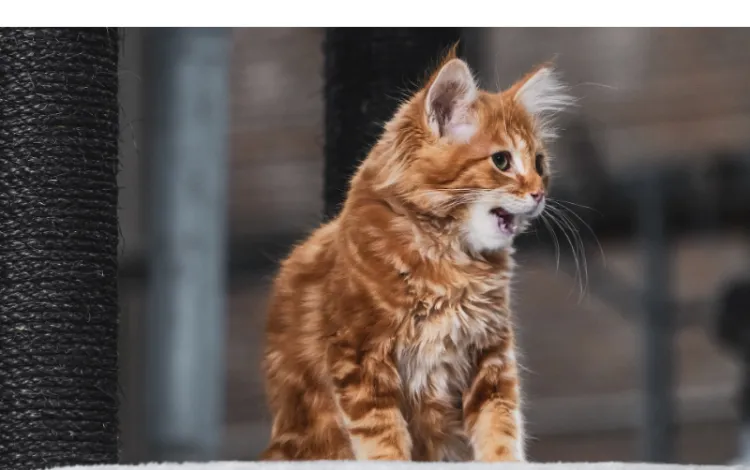Ah, Persian cats – those adorable, fluffy felines with their luxurious coats and lovable flat faces.
They’ve been stealing hearts around the globe for centuries, but if you’ve ever spent some quality time with one, you might have noticed that their breathing can be a bit… well, loud.
This brings us to the question: do Persian cats have breathing problems?
It’s not uncommon for Persian cat owners to wonder, “Is it normal for Persian cats to breathe loudly?” or “Why is my Persian cat wheezing?”
The short answer is yes; it can be normal for Persian cats to experience some breathing issues. But don’t worry; we’re here to help you understand why it happens and what you can do to make your feline friend as comfortable as possible.
Fun Fact #1: Did you know that Persian cats have been around for centuries? They're believed to have originated in Persia (modern-day Iran) around the 1600s!
The Anatomy of a Persian Cat’s Face
To understand why some Persian cats have breathing problems, let’s first take a closer look at the anatomy of their faces.
The Brachycephalic Breed
Persian cats are part of a group of breeds known as brachycephalic, which means “short-headed” or “short-nosed.” Other brachycephalic breeds include Pugs, Bulldogs, and Shih Tzus.
The short, flat face of a brachycephalic cat or dog is the result of selective breeding, where humans chose and bred animals with certain physical traits to create a specific appearance.
The Flat-faced Appeal
A Persian cat’s flat face gives them the distinctive, endearing look that so many people love. However, it’s important to remember that this unique appearance can come with some health issues.
The compressed facial structure of a brachycephalic cat can lead to a variety of breathing and respiratory problems.
Fun Fact #2: Persian cats come in a wide variety of colors and patterns, making each one unique. There are over 80 recognized color variations of Persian cats, including solid colors, tabby, tortoiseshell, and more!
Breathing Problems in Persian Cats
Now that we know a bit more about the anatomy of a Persian cat’s face, let’s explore the breathing problems they can encounter as a result of their unique features.
Brachycephalic Airway Syndrome
Brachycephalic Airway Syndrome (BAS) is common in Persian cats and other flat-faced breeds. Due to their shortened skulls, the airway structures inside their noses and throats can become compressed and obstructed.
This can lead to difficulties in breathing, and in some cases, the issues can be severe.
Symptoms to Watch Out For
If you have a Persian cat, it’s important to be aware of the following signs that could indicate breathing problems:
- Loud or labored breathing
- Wheezing or snoring
- Frequent coughing or gagging
- Exercise intolerance or difficulty breathing after exertion
- Blue or purple gums (a sign of low oxygen levels)
Other Health Issues Related to Brachycephaly
In addition to breathing problems, brachycephalic cats like Persians may also be prone to other health issues, such as:
- Eye problems (due to their shallow eye sockets)
- Dental issues (because of their crowded teeth)
How to Help Your Persian Cat Breathe Easier
While it’s true that Persian cats are more susceptible to breathing problems, there are steps you can take to help your feline friend breathe more comfortably and lead a healthier life.
Regular Vet Check-ups
First and foremost, make sure you take your Persian cat for regular check-ups with your veterinarian.
They can monitor your cat’s health, identify any potential issues early on, and recommend treatments or lifestyle changes to help prevent problems from worsening.
Weight Management
Maintaining a healthy weight is crucial for all cats but even more important for Persians. Excess weight can put extra pressure on your cat’s airways and make breathing even more difficult.
Your vet can help you determine the ideal weight for your cat and recommend a diet plan to help them maintain it.
Keeping the Environment Cool and Stress-free
Persian cats can be more sensitive to high temperatures and humidity due to their breathing difficulties. Make sure to keep your home cool and well-ventilated, especially during hot weather.
Also, try to minimize stress for your cat, as stress can exacerbate respiratory issues.
Grooming and Cleaning
Regular grooming is essential for Persian cats, as it helps remove excess fur and prevent hairballs, which can further obstruct their airways. Additionally, make sure to clean your cat’s face regularly, paying special attention to the folds around its nose.
This can help prevent the buildup of dirt, debris, and bacteria that could make breathing more difficult.
When to Seek Professional Help
As a responsible Persian cat owner, knowing when to seek professional help for your cat’s breathing problems is essential.
While some mild symptoms may not require immediate attention, there are situations where prompt veterinary care is crucial.
Here are some scenarios in which you should reach out to your veterinarian right away:
- If your cat is struggling to breathe or gasping for air.
- If your cat’s gums turn blue or purple, which is a sign of low oxygen levels.
- If your cat is frequently coughing or gagging and seems to be in distress.
- If your cat collapses or becomes lethargic after exercise or play.
In these cases, acting quickly is important, as your cat’s health may be at risk. Early intervention can significantly impact the outcome and help your furry companion live a healthier, more comfortable life.
Conclusion: Loving Your Persian Cat Responsibly
Persian cats, with their plush coats and distinctive flat faces, are undeniably charming and beloved pets.
However, it’s important to recognize that their unique appearance can come with some health challenges, particularly when it comes to breathing problems.
As a Persian cat owner, it’s your responsibility to be aware of these potential issues and take steps to keep your feline friend as healthy and comfortable as possible.
This includes regular vet check-ups, weight management, maintaining a cool, stress-free environment, and diligent grooming and cleaning.
By understanding the unique needs of your Persian cat and providing them with the proper care, you can help them lead a happier, healthier life.
And in return, you’ll have the joy and companionship of your adorable, flat-faced feline for years to come!









![why-maine-coon-follow-me-everywhere]](https://www.howtoanimal.com/wp-content/uploads/2023/04/Featured_Image_why-maine-coon-follow-me-everywhere.webp)
